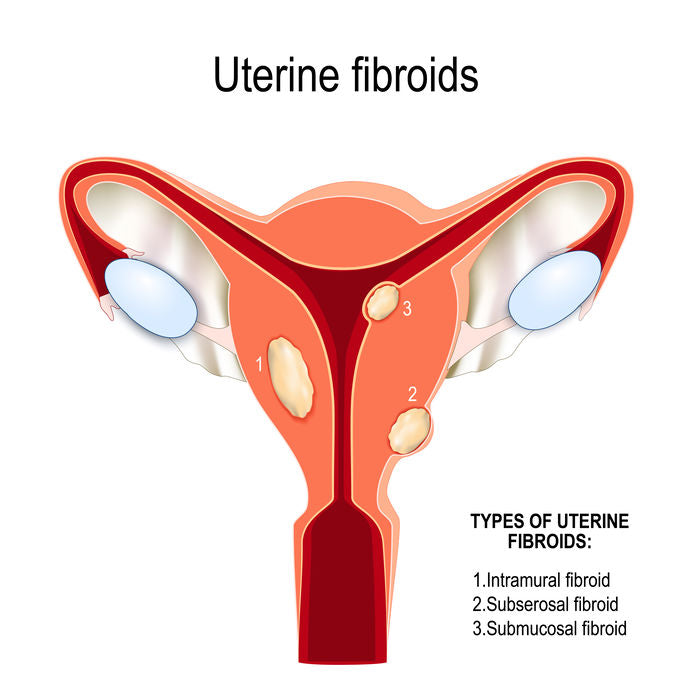
Can Fibroids Ruin Our Chances of Getting Pregnant?

Giving birth to a child is the ultimate bliss a woman hopes to enjoy in life. For some women, though, it seems elusive. Out of the various factors that can prevent or postpone your pregnancy, fibroids is one of the most common. Although fibroids can hinder your chances of conception, they can be treated effectively.
What Are Fibroids?
Fibroids are non-cancerous tumors that are medically referred to as uterine leiomyomata. These masses of tissues are composed of uterine cell tissues and typically grow in groups either inside the uterus or around it.
They vary in size and the bigger sized fibroids can affect the shape and size of the uterus. The can be as small as the size of a bean or as large as the size of a melon. Fibroids are also termed as uterine fibroids, fibromyomas, and myomas. Women in the age group of 30 to 50 are more prone to be affected by fibroids; with at least 50 to 80 percent of women have at least one fibroid.
What Causes Fibroids?
Though the exact causes behind the growth of fibroids are not known, they are linked to estrogen, the female productive hormone. Estrogen and progesterone levels are higher during the reproductive years. Fibroids swell when estrogen levels are higher and they shrink while the estrogen levels are lower. Women who have a family history of fibroids can also develop them.
Types Of Fibroids
Fibroids that grow outside of the uterus are called subserosal fibroids. These fibroids are often the largest of the types of fibroids and are less likely to affect your chances of getting pregnant.
Submucosal fibroids are the fibroids that will grow on the inside of your uterus. These are rarer and account for somewhere around 1 in 20 fibroids. This type is the most likely to negatively affect your chances of getting pregnant and are the most difficult to treat.
There are different types of Fibroids. The most important types of fibroids include:
Intramural Fibroids:
Intramural fibroids are the most common type of fibroid. These develop inside the uterine wall, stretching your womb, and affecting your chances of getting pregnant.
Subserosal Fibroids:
These fibroids are positioned near the exterior of the uterus and are usually found either in the myometrium, which is the muscle of the uterus or hanging off the outside of the uterus, according to Newton-Wellesley Hospital. These fibroids can create symptoms such as bladder or rectal pressure.
Submucosal Fibroids:
These fibroids are usually located right underneath the lining of the uterus, or the endometrium, and extend out into the uterine cavity. These fibroids can be the cause of heavy bleeding, longer menstruation, and irregular bleeding.
Can Fibroids Affect Pregnancy?
Since most fibroids have the ability to alter the shape and size of the uterus, as well as being able to grow inside the uterus and along the outer wall, many researchers feel that they can affect conception and pregnancy. However, it has also been shown that removing the fibroids can improve fertility rates up to 70 percent. Subserosal fibroids do not affect fertility.
Removal Of Fibroids
Fibroids can be treated with medication, such as gonadotropin-releasing hormone agonists, progestins, oral contraceptive pills, androgenic agents, and anti-estrogens. However, these are mostly used to control the symptoms, such as heavy bleeding, and do not shrink the fibroids or uterus.
The best way to treat fibroids is to have them removed via surgery. A myomectomy is performed to preserve the uterus while removing only the fibroids and is an alternative to a hysterectomy. According to WebMD, it is the only recommended treatment for women who still wish to conceive. Myomectomy can be abdominal, laparoscopic, or hysteroscopic.
Hysterectomy involves the removal of the uterus. This minimally invasive procedure has different types of surgical approaches namely vaginal hysterectomy, abdominal hysterectomy, laparoscopy-assisted vaginal hysterectomy, and laparoscopic hysterectomy.
Yet another procedure that is gaining popularity is Uterine Artery Embolization (UAE) as it is an alternative to surgery and is performed by an interventional radiologist. This procedure blocks the flow of blood to the fibroids thus making them shrink and die.
Fibroids And Pregnancy
If pregnancy is achieved while fibroids are present, they will likely increase in size. While most women with fibroids do not face any problems during pregnancy, some women are affected leading them to have a miscarriage or preterm labor.
Large sized fibroids can cause many complications including postpartum hemorrhage. When the size of the fibroids grows larger, they could cause difficulty with labor by obstructing the birth canal or necessitating a cesarean section.
Growth of fibroids inside the uterus can affect the baby’s position in the womb. In most cases, fibroids are not treated during pregnancy.
Tags:
Health Issues
Quick links
Search
Contact Us
Shipping Information
Helpful Info
Terms of Service
Privacy Policy
Do not sell my personal information
Contact us
About us
BabyHopes.com is a family owned and operated business, opened in January 2001. We have been serving the trying to conceive community for over 20 years.
